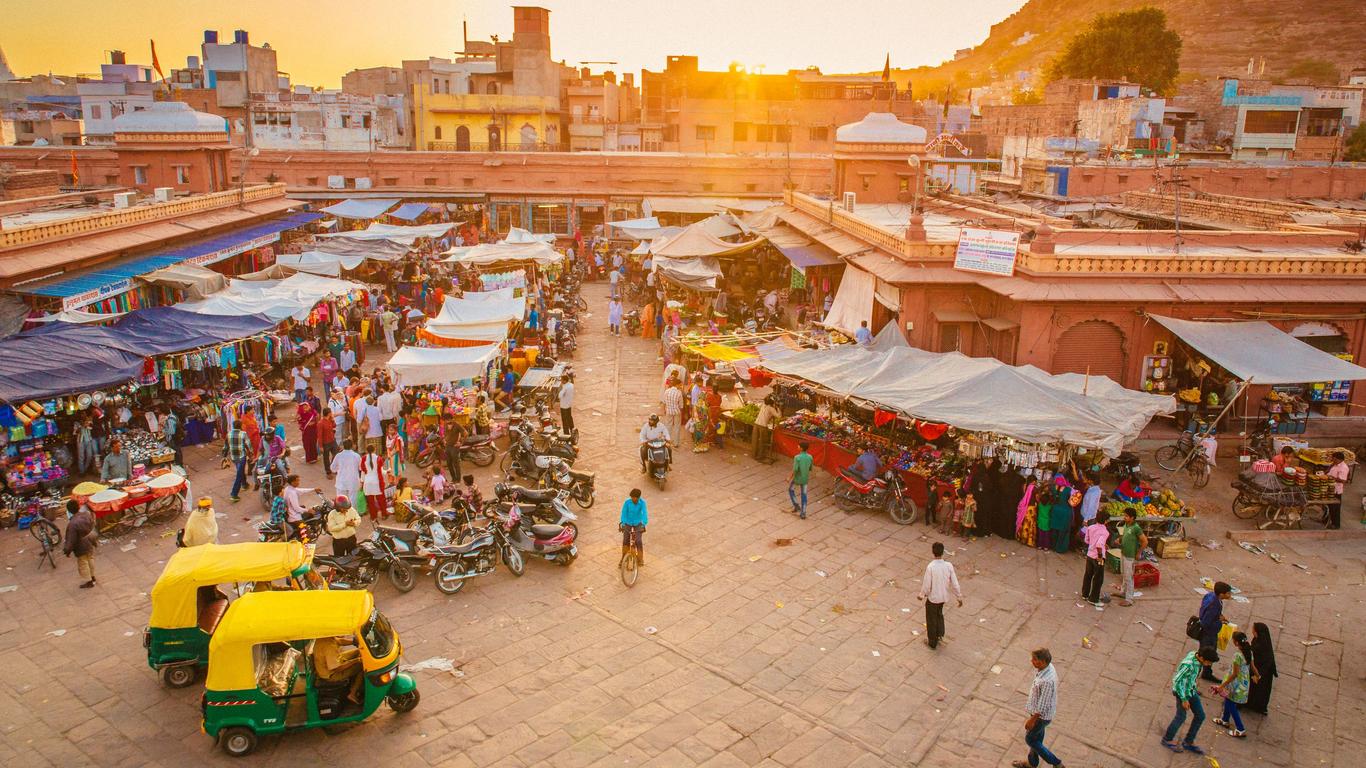Affectionately known as the “Blue City” due to its brightly coloured houses, Jodhpur lies on the edge of the Thar Desert in the Indian state of Rajasthan. It was established in the mid-15th century as the new capital of Marwar and encircles the immense ramparts of Mehrangarh Fort.
Things to do in Jodhpur
No visit to Jodhpur is complete without exploring Mehrangarh Fort, which rises atop a rocky hill overlooking the city. It was constructed in the 15th century by Rajput ruler Rao Jodha and features a network of courtyards and halls exhibiting exquisite stone-lattice work. Browse the palanquins, textiles and paintings on display in its galleries, then marvel at the 19th-century wall paintings decorating the Flower Palace.
Often described as the “Taj Mahal of Marwar”, Jaswant Thada is a magnificent cenotaph built from thinly carved and polished marble sheets. It fuses Rajputana and Mughal architectural styles and is decorated with images of Rathore rules. The cenotaph is surrounded by tranquil gardens with a scenic lake and gazebos where concerts are regularly held.
You can escape the hustle and bustle of Jodhpur in the Rao Jodha Desert Rock Park, which protects a tract of ecologically restored desert renowned for its volcanic rock and sandstone formations. Occupying a 17th-century gateway is the Visitors Centre, which features exhibits about the park’s native ecology. Four trails wind their way through the park and can be explored with the help of a naturalist guide.
Getting around Jodhpur
Jodhpur Airport is a 15-minute drive from the city centre and has flights to destinations across India. Regular trains connect from Delhi and Mumbai to the Jodhpur Junction railway station and buses travel throughout the city. Taxis and auto rickshaws are readily available for getting around Jodhpur.





